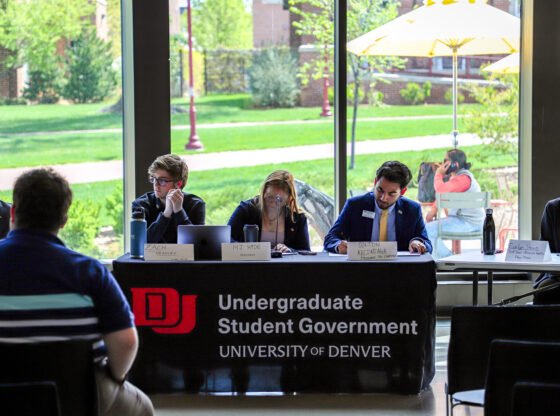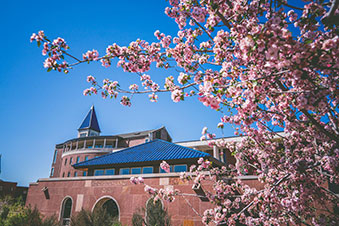Two DU law students filed a lawsuit last Wednesday to prevent the well-known French artist Christo from going through with his proposed art project to drape fabric panels across a canyon of the Arkansas River.
Justine Shepherd and Mason Brown, both third year students at the Sturm College of Law, filed the suit against the Bureau of Land Management (BLM), Interior Secretary and once-Senator of Colo. Ken Salazar, on behalf of Rags Over the Arkansas River (ROAR). ROAR is protesting Christo’s plan to hang 5.9 miles of aluminum-coated fabric across the Arkansas River over a 42-mile stretch near Canon City.
Shepherd and Brown are able to participate as lawyers on behalf of ROAR because of Sturm’s Environmental Law Clinic (ELC) program. ELC pairs law professors and students to help the students develop real-world legal skills. Professor Mile Harris, the Director of ELC, will oversee Shepherd and Brown.
Gov. John Hickenlooper said he favors Christo’s project because of the economic and cultural impact of the art work. He cited a study that said over $121 million of economic output would be created by the project.
Christo’s last art project, “The Gates in New York City,” attracted nearly four million visitors and an estimated $250 million in economic activity.
Last November, the BLM approved Christo’s plan and cited economic environmental and safety research done by the artist in support of the project.
“After careful consideration of the potential impact to the Arkansas River, the wildlife and plants that inhabit this beautiful area, we believe that steps have been taken to mitigate the environmental effects of this one-of-a-kind project,” said Salazar in a press release by the BLM.
Shepherd and Brown said they disagree. They cite provisions in the Federal Land Policy and Management Act that requires the BLM to adhere to the resource management plan they and the community created for the Royal Gorge area. The BLM argues the art project is condoned in the plan.
“The BLM gave approval based on the ‘recreation’ provision,” said Shepherd. “This project is not akin to recreational activities, like biking or hiking, but more like resource abstraction. [Christo] proposes to drill holes across the river, some reaching 30 feet into the rock.”
“In no way are we trying to sue because of artistic merit, but based on environmental law statues the BLM is under,” said Brown.
Opponents argue the economic activity estimates are unreasonably high; they cite US-50, the main road to reach Cañon City, cannot accommodate hundreds of thousands of people.
The students both said they don’t expect to see the lawsuit to the end because they both are in the final year of their law degree and the lawsuit may not see the inside of a court room for another year. The ELC, which currently has 12 members, will replace them when they graduate.










